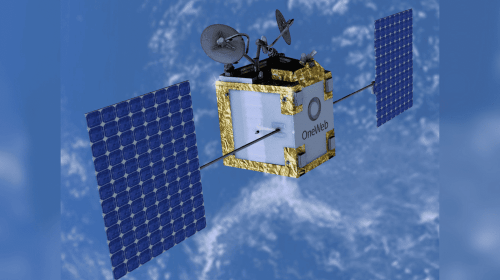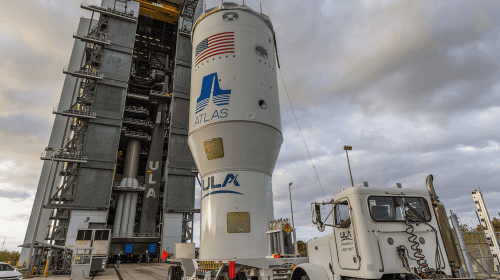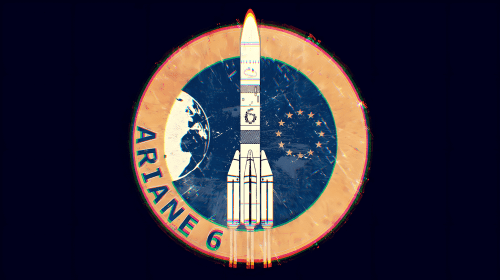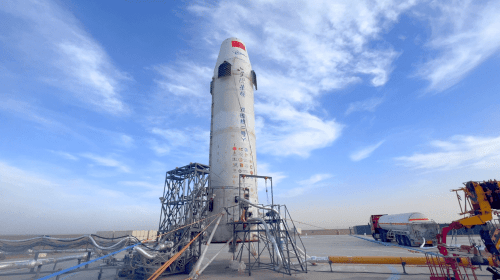Jun 10, 2018
Most of the satellites we use for broadband communications are in GEO or Geostationary Earth Orbits. That is, they are located some 35,786 km (22,236 miles) above the equator, and the goal is for them to stay fixed in that one spot over the same piece of the planet, right over the equator, so that fixed VSAT terminals on the ground can be pointed at the satellite and always have a solid signal.
Inclined Orbit Satellites Explained

Geostationary orbits however, are not particularly stable. The satellite is influenced by various gravitational forces such as the sun and moon. These forces would cause the satellite to drift north and south on a daily basis and the effect would worsen with time. Fixed VSAT antennas would not work as the satellite drifted above and below their plane of view and all VSATs would end up needing tracking motors which significantly increases the cost of the VSAT hardware.
The satellite therefore has a fuel or propellant (generally hydrazine) which through small jets or thrusters, keep the satellite in position. The most efficient use of the fuel is to have the satellite trace what from our perspective is a figure 8 in space, keeping it within a small ‘box.’ The fuel is used as efficiently as possible to extend its use. This process is called “stationkeeping.”
When the propellant runs out, usually in 10 – 15 years, the satellite must be discarded and replaced; often moved to a “graveyard orbit” where it is out of the way. To delay this inevitable ending, a satellite owner may elect to omit the inclination maneuvers that control north/south movement and instead, only control eccentricity or east/west movement. This results in an elongated figure 8 in the sky, where the satellite appears to drift north and south, while otherwise remaining in the same place over the earth.

Tracking VSAT Antennas
In order to use an inclined orbit (IO) satellite the site must have a tracking VSAT antenna on the ground. The antenna must track with the satellite in order to stay in communications with it. The tracking antennas are more expensive than basic fixed VSAT gear; however, bandwidth costs on IO satellites are often very competitive and may quickly justify the higher hardware costs.
There are a couple technologies used for tracking controllers that move the antenna automatically to track the satellite.
The AGC-controlled controller monitors the level of the received signal and moves the antenna as required to peak the signal. These controllers generally maintain a “history” or “map” of the figure-8 pattern. This history is established in the first day’s operation. The information gathered is used to tell the controller the best way to move to peak the antenna signal, and the controller can keep the antenna on the expected path should the satellite signal temporarily fail – so when it comes back, the antenna is in the right place, based on prior history. All movements are tiny motions made in incremental steps. These devices are often referred to as “step-track” controllers.
Program-controlled controllers mathematically calculate the pointing angles to the satellite and move the antenna according to the results. Program data is entered into the controller, telling the controller the satellite location, degree of inclination, etc. Instead of moving in a series of short steps, the Program-controller moves the antenna continuously. This technique is more accurate and works best in low-signal situations. However, since this solution calculates pointing angles from a program, rather than the observed drift of the satellite itself, program changes or updates are required from time to time.
Tracking antennas operate differently depending on the vendor and technology employed, but most tracking systems provide some or all of the following functions:
- Locate – the antenna may be manually aligned with the satellite to begin with, or using a program table of available satellite locations, the antenna can locate the satellite itself and lock on to it. A tracking antenna that can locate, align and cross-pol by using 3-axis control is going to be the simplest and fastest to deploy.
- Track – in this mode, the controller peaks the signal strength (AGC = Automatic Gain Control), by making small movements to the antenna. The time and position are recorded in memory as the system determines the correct pointing location for the strongest signal. The controller continues to adjust, track and record until such time as it has made a complete circuit of the IO elongated figure 8.
- Program – once the antenna knows the track of the satellite, it automatically and smoothly adjusts the antenna to follow the track of the satellite, minimizing wear on the antenna actuators. At the same time, it continually monitors the signal to ensure that the antenna remains on the most optimum track.
- Search – if the satellite signal has been lost, the controller will enter a search mode. In some cases this means continuing to move the antenna to where the track history indicates that it will be found – in other cases, if the signal is lost, the antenna may enter a search within a parallelogram shaped area where the controller calculates that the satellite will be found.
There are a new generation of flat panel antennas (FPA) being developed, and in due course they will also provide access to IO satellites.
Cost Justification Analysis
There are several factors to consider that normally don’t come into play for standard fixed satellites, but the economics aren’t that challenging. The tracking antenna will surely cost more, but in a great many cases, the savings in service costs, rapidly cost justifies the expense.
What happens when the IO satellite is retired from service? At that time you can look for a new IO service, or simply point the tracking dish at a geostationary satellite – where it will always stay peaked better than a fixed dish. By the time that happens, the dish investment has been written off.
The economics of an IO situation are compelling for all parties. The satellite owner continues to receive a revenue stream from a satellite that has exceeded its planned useful life. The revenue stream is lower, but the use of propellant is less, thus extending the useful life of the satellite, often by several years. For the customer, the hardware costs are higher, but the potential savings quickly cost justify the investment and provide an ongoing service savings that can be quite significant.
Please Contact BusinessCom Networks to learn whether IO services are available where you need coverage, and for help evaluating the business case for such a solution.





